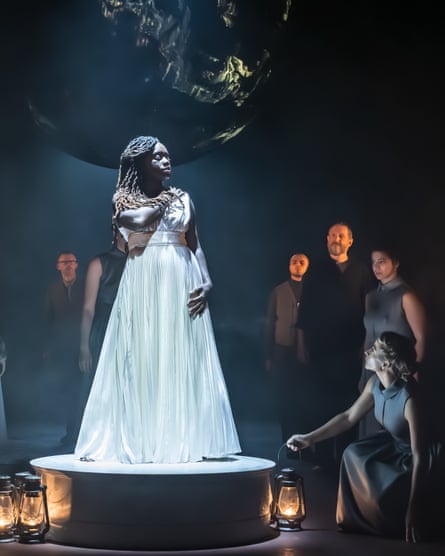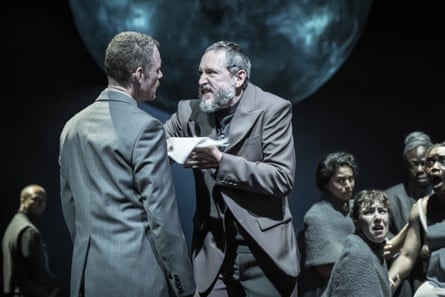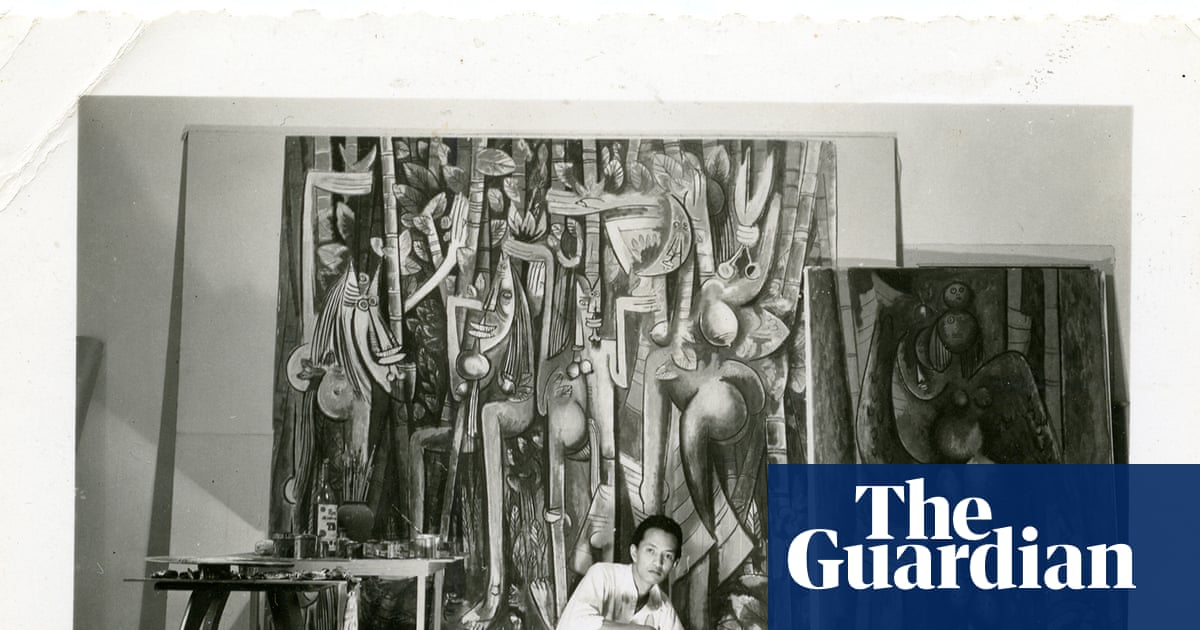Male sexual jealousy drives Shakespeare’s problem play before it is smoothed over by its 11th-hour happy ending. Yaël Farber’s production animates the psychological terror that King Leontes (Bertie Carvel) wreaks on his pregnant wife Hermione (Madeline Appiah), out of his unfounded suspicion that she has been unfaithful with his old friend, Polixenes (John Light). Carvel makes a convincingly deluded barefoot king, regarding himself as the vulnerable cuckold. His suspicion turns to solid belief to unleash punishment on Hermione.
In its first three sombre acts, the drama plays out as a thriller, with expressionist movement and lighting. A gigantic orb of a full moon hangs over the stage (Soutra Gilmour’s design is spare and striking as a whole), turning cool white or roiling red to reflect the action.

Farber recently staged two Shakespeare tragedies at the Almeida: a Macbeth four years ago which was full of slow and meditative dread, and an arresting King Lear last year. This feels like a third tragedy in some ways, lugubrious in mood and with a monochrome aesthetic in the first, darker half.
But there is a fuzziness to the storytelling. This modern-dress production is all smoke and shadows, unmoored from a specific time or place, so it is harder to contextualise its themes. More specifically, some scenes are vague, such as Antigonus’s pursuit by a bear which is dealt with symbolically – a static figure takes off the mask to reveal herself as Hermione. It is beautiful but unclear.
Tim Lutkin’s lighting design turns warm in the second half, with lovely live music (lone musicians waver around the set). The usually awkward change of mood, from dark to light, works smoothly here: the play glides into a second half with Autolycus (Trevor Fox) its light-fingered highlight.
But Farber seems at pains to add her own mythical layers: the figure of Time (also Fox) speak a choral ode from Brecht’s The Antigone of Sophocles instead of the Oracle of Apollo, and this is opaque in its meaning. The feast in Bohemia is inspired by the ancient Greek ritual of the Eleusinian Mysteries, so the programme explains, adding that, for Farber, Hermione and Perdita “wear the mask of Demeter and Persephone”. An interesting idea on the page, it is gnomic on stage.

There is more clarity around female strength and resistance, to counter Leontes’ tyranny. Aïcha Kossoko, playing noblewoman Paulina, is a powerful presence while Appiah, as Hermione, exudes pained dignity and courage alongside her bewilderment. When she testifies in court, she is a bereft mother with lactating patches on her dress after her newborn baby has been taken from her. It is an abject scene.
The production never stops looking beautiful, and bustles with a wealth of original concepts, but sometimes resembles a puzzling procession. It remains an unsolved problem play, the first half – shaped so artfully as a tragedy of explosive and irrational male rage – still not quite wedded to its second.

 3 months ago
106
3 months ago
106

















































